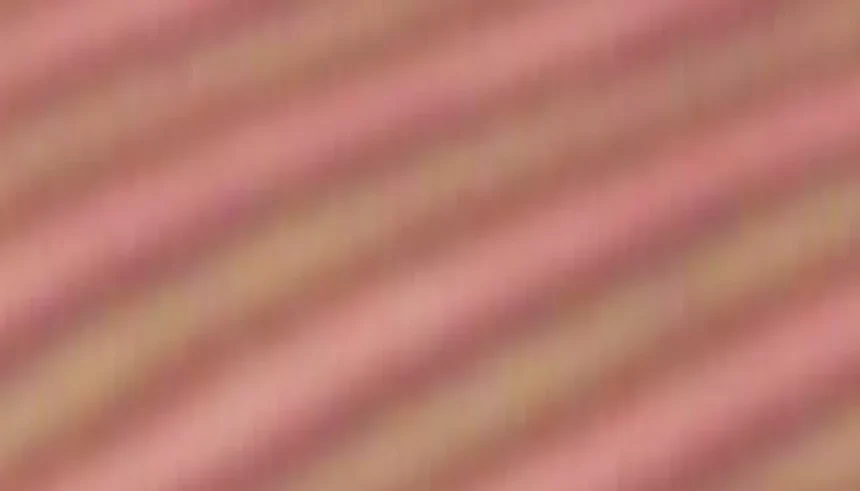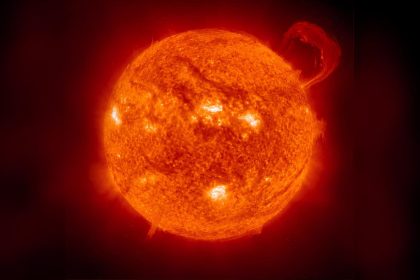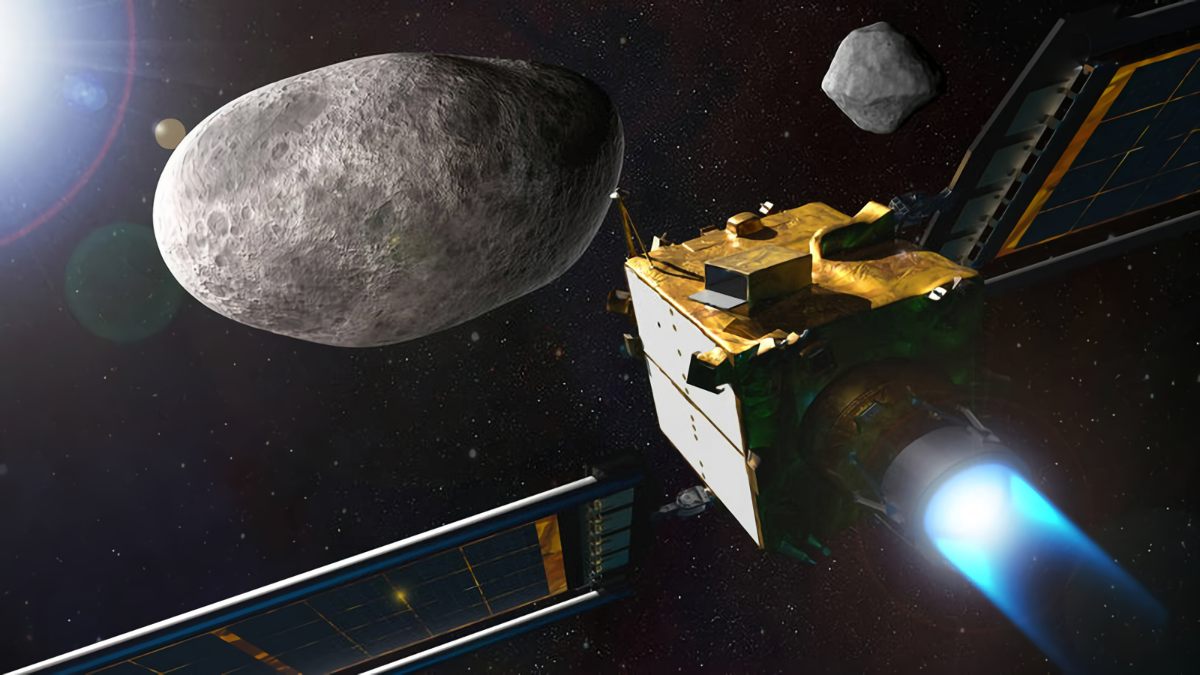In a crystal, like salt or diamond, atoms are regularly spaced. But in a “time crystal”? Frank Wilczek, professor at the Massachusetts Institute of Technology and Nobel Prize winner in physics for his work on the strong interaction in particle physics, proposed this strange concept in 2012 in which the periodicity would be temporal. Since then, numerous teams have created various “time crystals” inspired by this idea. Recently, Hanqing Zhao and Ivan Smalyukh, from the University of Colorado at Boulder, in the United States, took it a step further by creating for the first time a “spatiotemporal” crystal, whose behavior is visible to the naked eye.
The notion of a time crystal is far from trivial. Frank Wilczek developed this concept by starting first with the notions of symmetries and symmetry breaking. In physics, a symmetry is a transformation that leaves a system unchanged. For example, a circle is invariant under central rotation by any angle, while a square is only invariant for certain values (90°, for example). These symmetries are called “continuous” and “discrete” respectively.
Another example: a liquid or gas is symmetric under continuous spatial translation. If you perform a translation, in any direction and of any length, in these media, the system remains unchanged. Since molecules are free to move in all directions, the average properties don’t change during a translation. In contrast, in a crystal, this is not the case; an arbitrary translation changes the system. To preserve the crystal’s structure, you must perform a translation that moves each node of the lattice exactly onto another.
Thus when liquid water freezes and becomes an ice crystal, the translation symmetry that was continuous in the liquid is broken. This breaking associated with the crystalline structure induces the emergence of numerous interesting properties, such as mechanical rigidity. In this way, we can define a crystal by this notion of spatial symmetry breaking.
Now in a world with three spatial dimensions and one time dimension, it’s possible to wonder about the possibility of making a time crystal with novel properties. Spontaneously, one might think that an oscillating system breaks continuous time translation symmetry: if a pendulum has a period of one second and you take a photo every second, the system will always be in the same state. But if you take two photos separated by 1.2 seconds, the pendulum won’t be in the same position. However, such an oscillating system tends to dissipate its energy and stabilize in an equilibrium state. An external element is needed to maintain the motion by providing an amount of energy equivalent to what is dissipated.
Since in a spatial crystal, periodicity is an intrinsic characteristic of the material, an analogous situation would be needed to make a true time crystal. Frank Wilczek then suggested that this might be possible in certain quantum systems that would be in thermal equilibrium. An interesting consequence would be that the oscillations, because they rely on the system’s intrinsic properties, would be very stable and robust to perturbations from the environment.
Frank Wilczek’s initial definition of a time crystal was however quickly criticized. Physicists like Patrick Bruno, from the ESRF (European Synchrotron Radiation Facility), in Grenoble, showed that such systems, in thermal equilibrium, are impossible. The argument is as follows: the observables of a quantum system, when it is in equilibrium, are all independent of time. It is then impossible to have oscillating behavior.
Nevertheless, the idea inspired numerous teams to create time crystals out of equilibrium. In 2016, Norman Yao, from the University of California at Berkeley, proposed a recipe for constructing this new version of time crystals. The idea consists of taking a set of aligned ions whose spins interact. A “pumping” laser excites the system with a period T. An external magnetic field induces disorder in the system so that the laser’s energy is not absorbed by the system. If all conditions are met, the time crystal oscillates with a period nT, called “subharmonic,” where n is an integer. This would be like pressing a piano key once per second and obtaining a sound every two seconds, for example. Following this idea, in 2017, two teams obtained time crystals with a subharmonic response. It should be noted here that the broken symmetry is discrete, because it is initiated by the pumping laser that excites the system at a fixed frequency.
In 2022, the team of Hans Kessler and Andreas Hemmerich, from the University of Hamburg, obtained a time crystal with continuous pumping. The broken symmetry is therefore continuous, which is closer to the temporal analog of a solid crystal.
The experimentalists didn’t stop there in exploring this strange phenomenon. Hanqing Zhao and Ivan Smalyukh designed a “spatiotemporal” crystal, which breaks continuous translation symmetries, both spatial and temporal. To do this, the two researchers used a layer of liquid crystals sandwiched between two glass plates covered with a photosensitive dye (azobenzene).
Liquid crystals are abundantly used in display devices, such as phone screens. These are liquids in which rod-shaped molecules are free to move but which, under certain conditions like an electric field, organize themselves spontaneously. The researchers used a liquid crystal in the nematic phase, where all molecules tend to align in the same direction.
The system is illuminated from above with linearly polarized blue light of constant intensity. The dye molecules on the upper glass plate then orient themselves perpendicular to the polarization. This causes the liquid crystal rods just below to align with the dye molecules. But the influence becomes less and less strong as the rods are farther from the upper glass layer. In contrast, the light, penetrating the system, progressively loses its linear polarization in favor of elliptical polarization with a major axis slightly offset. The dye molecules on the lower glass plate then orient themselves perpendicular to the major axis of polarization and force the liquid crystal molecules just above to orient themselves accordingly. This creates a counter-reaction that propagates upward through the system. The complex interactions then give rise to waves of a particular type, solitons, which propagate in the liquid crystal layer.
The researchers modeled the system and simulated it numerically. They also developed a way to visualize the oscillations. They placed a retarder plate under the device. The blue light that passed through the entire device is elliptically polarized but with a major axis whose direction oscillates. The retarder plate has two perpendicular axes, a “fast” and a “slow” one, which allow filtering the light depending on whether its polarization is oriented along one axis or the other. The light then appears blue or yellow (in the video below, or pink and brown in the image above). With a simple microscope, the researchers then saw alternating bands moving regularly.
This observation suggests that there is indeed a “spatial crystal” with the alternation of yellow and blue bands of constant thickness and a “time crystal” since each point changes from one color to the other as the bands pass.
To ensure they had indeed produced a spatiotemporal crystal, Hanqing Zhao and Ivan Smalyukh verified that it was stable and robust in the presence of perturbations. They for example varied the temperature or the intensity of the blue light beam. The crystal remained stable and could be observed for several hours without change.
The researchers are already sketching applications for spatiotemporal crystals. These could be useful for example in making precise clocks since the oscillations are stable. Since the system requires little energy, it could be used in optical devices, as filters, or to modulate a signal in an optical fiber… More originally, by stacking several spatiotemporal crystals, the researchers obtain increasingly complex patterns. They propose using this idea to create a system on banknotes that would be difficult to reproduce, which would help fight counterfeiting. This spatiotemporal crystal probably opens a new axis of research, both theoretical and applied.






